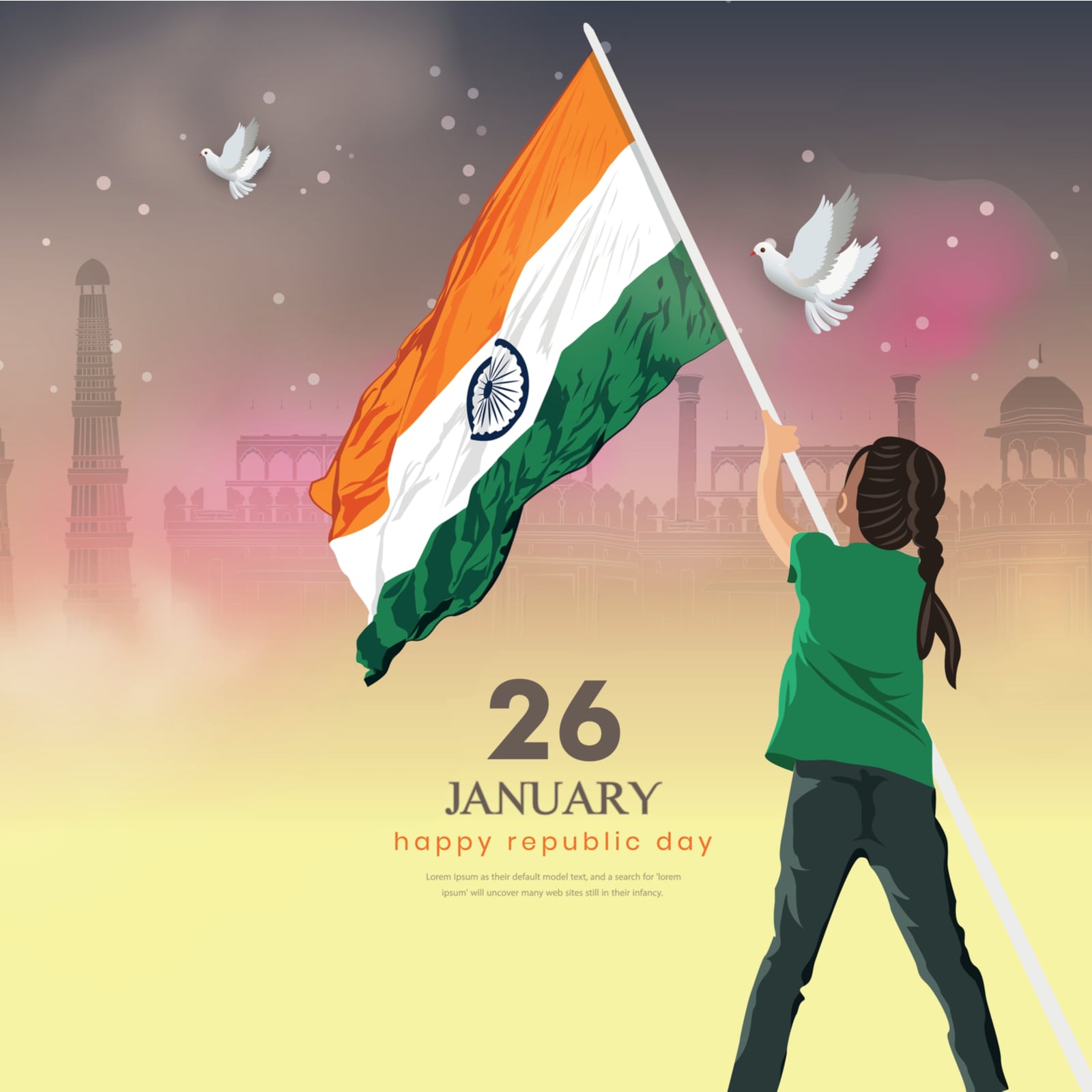- Since 1950, January 26 has marked the anniversary of the adoption of India’s Constitution.
- However, the Constitution was prepared well ahead of the scheduled date and was officially adopted by the Constituent Assembly on November 26, 1949.
- So, why do we celebrate Republic Day on January 26th?
- The answer can be found in the history of the Indian freedom struggle, which has been commemorated on this date since 1930.
- The historic “Poorna Swaraj” declaration was officially promulgated on January 26, 1930, ushering in the final phase of India’s freedom struggle, with the goal of complete independence from British rule.

Republic Day: The context of the 1920s
- The Non-Cooperation Movement came to an abrupt end in February 1922, following the Chauri Chaura incident.
- At the time, Mahatma Gandhi believed that the country was “not yet ready” for his nonviolent protest methods.
- As a result, the 1920s saw no further mobilisation on the scale seen during the Non Cooperation Movement and the anti-Rowlatt Satyagraha.
Precursor to the Poorna Swaraj Demand
- Revolutionaries such as Bhagat Singh and Chandrashekhar Azad rose to prominence in the 1920s.
- The 1920s saw the emergence of a new generation of Congress leaders such as Nehru, Subhash Chandra Bose, Vallabhi Patel, and C Rajagopalachari, laying the groundwork for the future course of India’s freedom struggle.
- Notably, British authorities appointed the Simon Commission – a seven-man, all-European team led by Sir John Simon – to deliberate on political reforms in India in 1927.
- This sparked outrage and discontent across the country.
Nehru Report and its protagonism for Dominion Status
- Protests against the Simon Commission spread across the country for the first time since 1922, with chants of “Simon Go Back” echoing across the country.
- In response, Motilal Nehru established his own commission.
- According to the Nehru Report, India should be granted dominion status within the Empire.
- Dominions were defined as “autonomous communities within the British Empire, equal in status, and in no way subordinate to one another in any aspect of their domestic or external affairs” in the Balfour Declaration of 1926.
- Dominions were to be united by a common allegiance to the Crown and be free to associate with the British Commonwealth of Nations.
Internal disagreement within the Congress over Dominion Status
- Crucially, even within Congress, the (Motilal) Nehru Report did not enjoy universal support.
- Young leaders such as Bose and Jawaharlal Nehru wanted India to break all ties with the British Empire.
- They contended that, while India would have some autonomy under dominion status, the British Parliament and Crown would still be able to interfere in Indian affairs.
- Importantly, for both Bose and Nehru, achieving dominion status would entail India becoming a party to colonial exploitation elsewhere in the British Empire, primarily in Africa.
- With a far more radical worldview than their predecessors, Bose and Nehru saw anti-colonialism as a global political issue rather than a local political issue for India.
- However, Gandhi remained strongly in favour of dominion status, arguing that it would be a significant step forward in India’s anti-colonial struggle. His viewpoints would soon shift.
Irwin’s retreat from the Dominion status promise
- Viceroy Irwin vaguely announced in 1929 that India would be granted dominion status in the future.
- The Irwin Declaration, which was warmly received by Indians, was met with a massive backlash in Britain.
- The British people remained pro-Empire, and India was regarded as the Empire’s crown jewel.
- Importantly, as the global economy entered a slump, India was arguably Britain’s most valuable colony, with its vast land, resources, and population vital to the country’s economy.
- As a result of the pressure from his family, Irwin broke his word.
Realizing the bluff
- In a meeting with Gandhi, Jinnah of the Muslim League, and a few other leaders, he stated that he could not guarantee India dominion status anytime soon.
- This would be a watershed moment as Congress became more united on the issue.
- With the British unable to implement even reasonable reforms, Indians supported increasingly “radical” goals, the first of which was a fully independent republic.
Poorna Swaraj Issues Proclamation
- The INC’s Lahore Session met in December 1929.
- The historic “Poorna Swaraj” resolution was passed in the session on December 19.
- On January 26, 1930, the Declaration of Independence was officially promulgated.
- The Congress urged Indians to gather and celebrate “independence” on that day.
- As the country restructured its Independence strategy, Congress party workers hoisted the Indian tricolour across the country and patriotic songs were sung.
- The national movement in India “shifted from the language of charity to the language of justice” with this declaration.
Republic Day in post-Independence India
- Between 1930 and 1947, January 26 was celebrated as “Independence Day” or “Poorna Swaraj Day,” with Indians reaffirming their commitment to sovereignty on that day.
- However, on August 15, 1947, India gained independence from the British, exactly two years after the Japanese surrendered to the Allies to end World War II.
- When leaders had to choose a date to promulgate India’s new constitution, they thought January 26 would be ideal.
- Not only did this date already have nationalist significance, but the Constitution mirrored the “Poorna Swaraj” declaration of two decades prior in many ways.
Source: https://m.timesofindia.com/life-style/events/why-is-the-republic-day-of-india-celebrated-on-january-26/articleshow/97281148.cms#:~:text=The%20Indian%20Constitution%20affirms%20India's%20existence%20as%20an%20independent%20republic.&text=26%20January%20was%20chosen%20as,India's%20independence%20from%20colonial%20rule.
